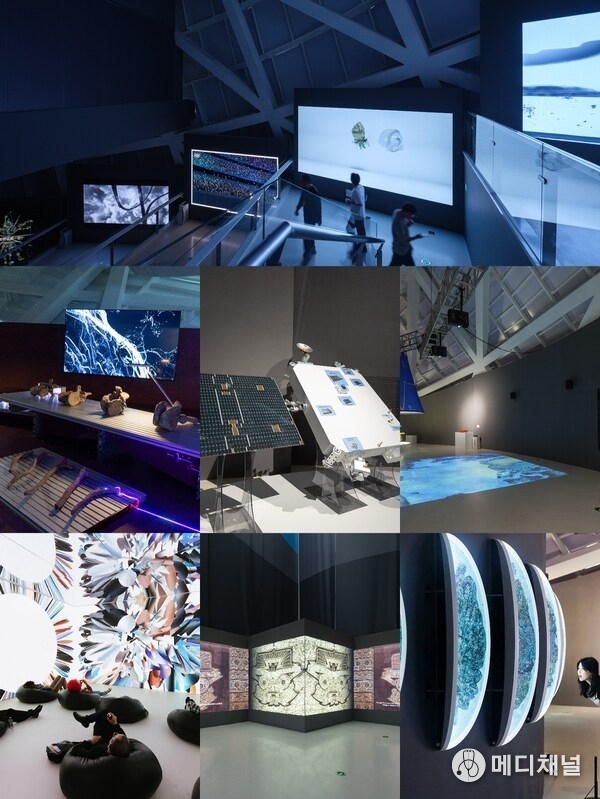HANGZHOU, China, Oct. 28, 2025 -- The China (Hangzhou) Art and Technology Biennale opened at Yuhang Art Museum, Hangzhou, China on October 18. It is jointly organized by the China Academy of Art (CAA), other art institutions and governmental Departments. As a key international event for cultural and art exchange held during the 3rd "Liangzhu Forum", the biennale gathers works by over 160 artists, scientists, and other creators from more than 20 countries and regions. It responds to the theme of the 3rd "Liangzhu Forum" — Revitalization of Civilization: Cultural Heritage and Human Culture Diversity.

Revisiting the "Ridge" of Civilization
The biennale, themed "Cultural Ecological Reconstruction Amidst Technological Iteration", starts the dialogue between "Heaven, Earth, Human, and Machine" through four core sections: "Connections: Embodied Interaction," "Symbiosis: Digital Education," "Speculation: Ecological Reconstruction", and "Manifesto: Philosophical Inquiry". The first section allows visitors to experience the connections between humans, machines, and the world through interactions. The second section focuses on promoting the coexistence of humanities and technology through digital education. The third section encourages visitors to speculate on how technology and environment can interact. The final section prompts reflections on the values and ethical boundaries of art-technology integration.
In the exhibition hall, the Jade Cong King stands tall, connecting the heavens. The China Dinosaur Project | Number 20241123, co-created by Liu Yihong's team at the CAA and researchers from the Chinese Academy of Sciences, builds on empirical studies of newly discovered sauropod fossils from Early Jurassic Yunnan. Through fieldwork, μCT scanning, stratigraphic analysis, numerical simulations, and algorithmic imaging, the team translates paleontological "hard data" into perceptible "visual spaces."
Converging Humanities and Technology at the Pinnacle
The "Trisolaris Computing Constellation" project represents a collaborative effort between Zhejiang Laboratory and global partners to build space-based computing infrastructure. The Deep-Sea Intelligent Unmanned Submersible, a virtual simulation and interactive installation created by the School of Innovation & Design of the CAA and the Chinese Academy of Sciences, represents an advanced, multifunctional piece of deep-sea exploration technology. The exhibition also features pioneering works by artists from around the globe. Zach Lieberman, a new media artist from MIT's Media Lab, presents Daily Sketches, where real-time audience gestures, sounds, and facial expressions are captured to generate abstract dynamic graphics. In Orbit, Finnish artist duo Grönlund-Nisunen's work, a 35cm stainless steel ball moves perpetually along a circular stainless steel track, powered by gravity and friction. The exhibition will run until December 18.

